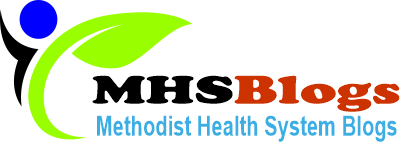CPAP Machine and Sinus Infection

The most effective treatment for OSA is continuous positive airway pressure therapy. Those with OSA can’t live without CPAP, but the therapy isn’t always adhered to because of common adverse effects like dry eyes, face discomfort, and headaches. One prevalent worry with CPAP machines is the risk of sinus infections, especially for people who suffer from seasonal or chronic allergies.
Fortunately, we did not find that CPAP machines actually increased the risk for sinus infections so long as you maintained a regular cleaning regimen. The best defense against a sinus infection caused by CPAP is regular maintenance, including changing or cleaning the air filter (depending on whether your machine utilizes reusable or disposable filters), rinsing and disinfecting the CPAP hose, and emptying the humidifier chamber.

Table of Contents
ToggleKeep reading and we’ll explain everything you need to know about CPAP machine-caused sinus infections and how to avoid getting them in the first place, including what causes them and what you can do about it.
Does Using a CPAP machine Cause Sinus Infection?
Without further humidification, CPAP therapy naturally dries the airway and forces filtered air from the surrounding environment into the lungs. A CPAP machine that is not regularly cleaned can become a breeding ground for bacteria, although the therapy itself is not linked to an increased risk of sinus infections. Click here to read about 6 home remedies for obstructive sleep apnea.

Two studies, one from 2012 and another from 2016, support the idea that OSA patients frequently have nasal inflammation and sinus infections. Those with OSA were found to be 3.18 times more likely than those without OSA to develop chronic rhinosinusitis.
However, the data also revealed that CPAP users had increased resistance to bacterial invasion of their disease-fighting white blood cells. Because this tolerance was not observed in non-CPAP therapy patients, we can infer that CPAP therapy reduces the risk of sinus infections rather than exacerbates existing ones.
Further, a 2017 study found that CPAP users did not have more sinus infections than non-CPAP users. It also discovered that the mask, machine, and humidifier you use make no appreciable difference in the frequency with which you have sinus infections. Visit http://mhsblogs.com/what-does-a-high-cpap-ahi-mean/ to read about What Does a High CPAP AHI Mean?
Poor maintenance and improper usage of a CPAP machine can lead to airway irritation and sinus infections, but the equipment itself does not cause these conditions. As a result, using CPAP while neglecting to keep the device clean is the only way to get a sinus infection.
In addition, if the device’s tubing or mask isn’t cleaned regularly, bacteria and other germs can begin to multiply there. Mold and fungi can grow in the humidifier, increasing the likelihood of a CPAP-related sinus infection.
Preventing Sinus Infections While Using CPAP Machine
The best way to avoid CPAP sinus problems is to maintain your CPAP machine regularly. The following is a list of things you can do to reduce your risk of developing a sinus infection due to using a CPAP machine:
Always change the air filters and clean your CPAP machine.
The importance of keeping CPAP equipment clean cannot be overstated, especially if you suffer from seasonal or chronic allergy issues. Your CPAP mask and cushion/nasal cushions should be washed daily in warm water with mild soap as soon as you get out of bed.
The humidifier tank needs to be emptied and dried, and the line needs to be hung up to air dry. Humidifier tanks and hoses should be washed out with soap and water once a week.
If your machine has a disposable air filter, you should change it at least once a month to keep it functioning properly. A reusable filter in your machine should be cleaned once a week and swapped once every six months.
The danger of illness from fungi, mildew, and bacteria can be reduced by using a specialized CPAP cleaner, which should be used in addition to, rather than in place of, your regular cleaning routine.
Use Distilled Water
To avoid unpleasant side effects like a dry mouth, stuffy nose, or nosebleeds, heated humidification is essential. While some microorganisms, like yeast and mold, flourish in warm and damp conditions, it is possible that your community’s water supply is tainted.
Using distilled water in a humidifier is a good way to avoid getting sick from mold or mildew. Distilled CPAP water not only protects your machine from mineral buildup caused by tap water, but it also decreases the likelihood of amoeba infections.
Adjust Your Humidifier and Consider Using a Heated Hose
The 2017 study we cited earlier revealed that heated humidification with CPAP did not reduce the occurrence of sinus infections, albeit it did help alleviate symptoms related to airway dryness. However, using a humidifier does include the risk of the hose being clogged with condensation. If you run a humidifier for an extended period of time without letting the hose drain thoroughly each morning, you may be encouraging the formation of mold and mildew.

However, you shouldn’t necessarily continue to use humidification, as low humidity levels can potentially cause issues like mucosal dryness. Humidified therapy air can be delivered to you more comfortably with the help of heated hoses, which keep the hose at a constant temperature all the way through. This helps keep the CPAP experience similar throughout the year by minimizing condensation buildup.
Do not Give Out your CPAP Machine or Mask to People to Use When ill
It goes without saying that you shouldn’t reuse anyone else’s mask, cushion, or tube, not even your partner or a member of your own family. You should also take extra precautions to disinfect your equipment before, during, and after exposure to an infectious illness. If you’re sick with a cold or the flu, it’s important to keep your mask and tubing clean so that you don’t get sick all over again.
Should I Stop Using CPAP When I Have a Sinus Infection?
In general, you should keep using your CPAP machine even if you’re feeling under the weather. Using your humidifier and ramp feature may help you manage the pressure when unwell, and the disadvantages of untreated sleep apnea will not aid in your recovery. If you frequently use a nasal mask for your treatment, you may find that having a full-face mask on hand for these situations is helpful in alleviating the discomfort associated with the nasal irritation.
The most effective treatment for OSA is continuous positive airway pressure therapy. Those with OSA can’t live without CPAP, but the therapy isn’t always adhered to because of common adverse effects like dry eyes, face discomfort, and headaches. One prevalent worry with CPAP machines is the risk of sinus infections, especially for people who suffer…
Recent Posts
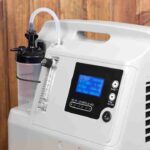 Medical Oxygen at Home: Essential Information on Oxygen Tanks, Machines, and TherapiesIntroduction For individuals with chronic respiratory conditions, such as COPD, asthma, or emphysema, medical oxygen therapy at home is often a critical part of maintaining health and improving quality of life. Whether you need an oxygen machine for […]
Medical Oxygen at Home: Essential Information on Oxygen Tanks, Machines, and TherapiesIntroduction For individuals with chronic respiratory conditions, such as COPD, asthma, or emphysema, medical oxygen therapy at home is often a critical part of maintaining health and improving quality of life. Whether you need an oxygen machine for […] Understanding Sleep Apnea: Causes, Symptoms, and Effective TreatmentsSleep is one of the most vital pillars of good health, but for millions of people, restful sleep is harder to achieve than it should be. One of the most common reasons for poor sleep quality is sleep apnea, a potentially serious sleep disorder that often […]
Understanding Sleep Apnea: Causes, Symptoms, and Effective TreatmentsSleep is one of the most vital pillars of good health, but for millions of people, restful sleep is harder to achieve than it should be. One of the most common reasons for poor sleep quality is sleep apnea, a potentially serious sleep disorder that often […]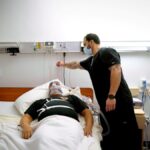 Bulk-Bill Sleep Study Brisbane: Affordable Options for LocalsWhat Are Bulk-Bill Sleep Studies and How Do They Work in Brisbane? Bulk-bill sleep study Brisbane services provide you with direct billing to Medicare, eliminating upfront costs for diagnostic testing. When you receive a bulk-bill sleep study, the […]
Bulk-Bill Sleep Study Brisbane: Affordable Options for LocalsWhat Are Bulk-Bill Sleep Studies and How Do They Work in Brisbane? Bulk-bill sleep study Brisbane services provide you with direct billing to Medicare, eliminating upfront costs for diagnostic testing. When you receive a bulk-bill sleep study, the […]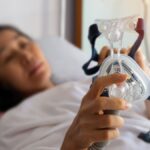 Sleep Apnea Test Adelaide: Early Diagnosis for Better HealthWhat Is Sleep Apnea and Why Is Early Diagnosis Important? Sleep apnea is a serious sleep disorder where your breathing repeatedly stops and starts during sleep. This condition affects millions of people worldwide, yet many remain undiagnosed, missing […]
Sleep Apnea Test Adelaide: Early Diagnosis for Better HealthWhat Is Sleep Apnea and Why Is Early Diagnosis Important? Sleep apnea is a serious sleep disorder where your breathing repeatedly stops and starts during sleep. This condition affects millions of people worldwide, yet many remain undiagnosed, missing […]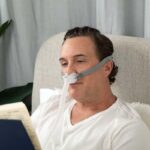 Sleep Apnea Explained: Causes, Symptoms, and Treatment OptionsIntroduction: Why Sleep Apnea Deserves Your Attention Picture this: you go to bed at a reasonable hour, expecting a full night’s rest, yet you wake up feeling drained, irritable, and foggy-headed. It’s not just “bad sleep” — it could be sleep apnea, a […]
Sleep Apnea Explained: Causes, Symptoms, and Treatment OptionsIntroduction: Why Sleep Apnea Deserves Your Attention Picture this: you go to bed at a reasonable hour, expecting a full night’s rest, yet you wake up feeling drained, irritable, and foggy-headed. It’s not just “bad sleep” — it could be sleep apnea, a […]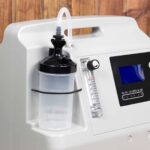 Top 5 Online Stores to Purchase a Portable Oxygen Concentrator MachinePortable oxygen concentrators (POCs) have become essential devices for individuals with respiratory conditions, providing a convenient and reliable source of oxygen. With the rise of e-commerce, purchasing a POC has never been easier. However, selecting […]
Top 5 Online Stores to Purchase a Portable Oxygen Concentrator MachinePortable oxygen concentrators (POCs) have become essential devices for individuals with respiratory conditions, providing a convenient and reliable source of oxygen. With the rise of e-commerce, purchasing a POC has never been easier. However, selecting […] Portable Oxygen Concentrator Australia: Features and BenefitsIn recent years, the demand for portable oxygen concentrators (POCs) has surged in Australia, largely due to the increasing prevalence of respiratory conditions and the need for greater mobility among patients. These devices provide a continuous supply […]
Portable Oxygen Concentrator Australia: Features and BenefitsIn recent years, the demand for portable oxygen concentrators (POCs) has surged in Australia, largely due to the increasing prevalence of respiratory conditions and the need for greater mobility among patients. These devices provide a continuous supply […]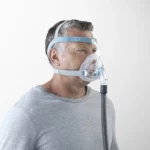 CPAP Masks Australia: A Comprehensive Guide to the Best Options AvailableContinuous Positive Airway Pressure (CPAP) therapy is a common and effective treatment for obstructive sleep apnea. One crucial component of this therapy is the CPAP mask, which delivers the airflow necessary to keep the airways open during sleep. In […]
CPAP Masks Australia: A Comprehensive Guide to the Best Options AvailableContinuous Positive Airway Pressure (CPAP) therapy is a common and effective treatment for obstructive sleep apnea. One crucial component of this therapy is the CPAP mask, which delivers the airflow necessary to keep the airways open during sleep. In […]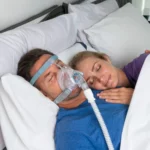 CPAP Mask Online Shopping: How to Ensure You’re Choosing the Right Mask for YouChoosing the right CPAP mask for your needs is essential for effective sleep apnea treatment. With the convenience of online shopping, it’s possible to find various options without stepping out of your home. However, the multitude of choices available […]
CPAP Mask Online Shopping: How to Ensure You’re Choosing the Right Mask for YouChoosing the right CPAP mask for your needs is essential for effective sleep apnea treatment. With the convenience of online shopping, it’s possible to find various options without stepping out of your home. However, the multitude of choices available […]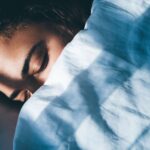 Discovering Your Sleep Type: The Benefits of a Sleep Type TestDo you often find yourself tossing and turning at night, struggling to fall asleep? Or maybe you drift off to dreamland effortlessly but still wake up feeling groggy and exhausted. If either of these scenarios sounds familiar, it’s possible that […]
Discovering Your Sleep Type: The Benefits of a Sleep Type TestDo you often find yourself tossing and turning at night, struggling to fall asleep? Or maybe you drift off to dreamland effortlessly but still wake up feeling groggy and exhausted. If either of these scenarios sounds familiar, it’s possible that […]
